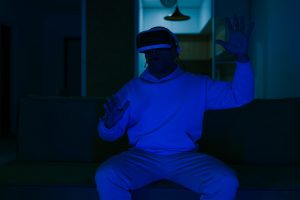Advanced Sensor Arrays: Next-Gen Lidar and Radar for Self-Driving
As the technology for self-driving cars rapidly advances, the need for more sophisticated sensor arrays has become increasingly apparent. Lidar and radar, two popular types of sensors used in autonomous vehicles, have proven effective in detecting and navigating through the environment. However, with the introduction of advanced sensor arrays, the capabilities of self-driving cars are being taken to the next level. In this article, we will explore how next-gen lidar and radar are shaping the future of self-driving.
What is Lidar and Radar?
Lidar, which stands for Light Detection and Ranging, is a remote sensing technology that uses laser pulses to create a 3D map of the surroundings. It measures the distance to objects by calculating the time it takes for the laser beams to bounce off objects and return to the sensor. This allows lidar sensors to create a high-resolution, detailed map of the environment, making it a valuable tool for self-driving cars.
Radar, on the other hand, uses radio waves to detect and track objects in its vicinity. It works by sending out radio waves and measuring the time it takes for the waves to bounce off objects and return to the sensor. This information is then used to determine the location, speed, and size of the objects. While lidar provides accurate 3D maps, radar is better at detecting moving objects, making it an essential component for self-driving cars.
The Limitations of Traditional Lidar and Radar
Limited Range
One of the biggest limitations of traditional lidar and radar is their limited range. While lidar can accurately scan objects up to several hundred meters away, it struggles to detect objects beyond that range. Radar, on the other hand, has a longer range, but its resolution is significantly reduced at farther distances. This makes it difficult for self-driving cars to accurately detect objects in the distance, hindering their ability to make safe, split-second decisions.
Poor Performance in Bad Weather
Another challenge faced by traditional lidar and radar is their performance in bad weather conditions. Heavy rain, snow, and fog can significantly reduce the effectiveness of these sensors, making it difficult for self-driving cars to operate safely. This is because lidar and radar rely on the reflection of light or radio waves, and bad weather can disrupt these signals, resulting in inaccurate readings. As a result, self-driving cars may fail to detect obstacles or may detect false positives, leading to potentially dangerous situations.
The Advancements in Next-Gen Lidar and Radar
Longer Range and Higher Resolution
One significant improvement of next-gen lidar and radar is their increased range and resolution. These sensors use more sophisticated technology, such as advanced algorithms and more powerful lasers and radio waves, to scan a wider area and capture more detailed information. This allows self-driving cars to have a clear understanding of their surroundings, even at longer distances, making them safer and more efficient on the road.
All-weather Capability
Next-gen lidar and radar also address the issue of performance in bad weather. These sensors use multiple wavelengths of light or radio waves, along with advanced signal processing techniques, to mitigate the effects of bad weather. This enables them to obtain accurate readings even in harsh weather conditions, ensuring the safety of self-driving cars and their passengers.
The Impact on the Future of Self-Driving
The advancements in next-gen lidar and radar are paving the way for fully autonomous vehicles on the roads. With their improved range, resolution, and all-weather capability, self-driving cars equipped with these sensors will be able to navigate through complex environments and make decisions in real-time accurately. This means that in the near future, we can expect to see self-driving cars operating safely and efficiently, making our lives easier and revolutionizing the way we travel.
Beyond Self-Driving Cars
The use of advanced sensor arrays is not limited to self-driving cars. These sensors can also be used in other industries, such as agriculture, mining, and construction, to improve efficiency and safety. For example, next-gen lidar and radar can help farmers monitor crop growth and detect pests, allowing them to make informed decisions for better yields. In construction and mining, these sensors can aid in site surveys and monitoring for potential hazards.
The Future is Bright with Advanced Sensor Arrays
Next-gen lidar and radar are fundamentally changing the way self-driving cars operate and are opening up new possibilities in other industries. With their advanced features and capabilities, these sensors are key to the success of autonomous vehicles and will continue to shape the future of transportation and beyond.
In conclusion, advanced sensor arrays are the next step in the evolution of lidar and radar for self-driving cars. With their improved range, resolution, and all-weather capabilities, these sensors are bringing us closer to fully autonomous vehicles that can navigate through any environment safely. The future is bright with advanced sensor arrays, and we can’t wait to see the impact they will have on our lives.







